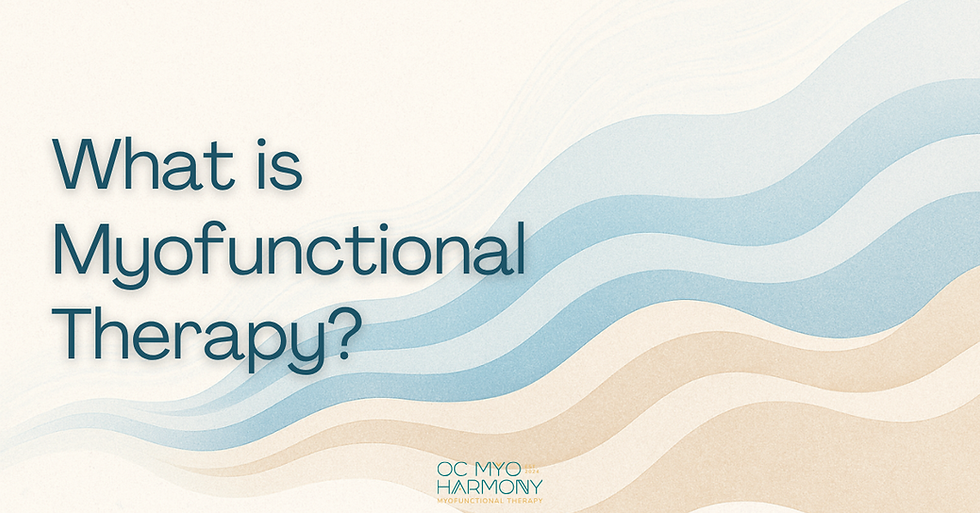Tongue Posture Explained: A Small Habit with Big Impact
- Kristina Salazar

- May 20
- 3 min read
Have you ever paid attention to where your tongue rests when you're not talking or eating? Most people haven’t, but this tiny detail can quietly influence how we breathe, sleep, and develop. From childhood habits to adult tension and snoring, tongue posture plays a bigger role than you might expect. The good news is that it's something you can become aware of and improve at any age.
So what is proper tongue posture?
Proper tongue posture means your tongue rests gently against the roof of your mouth when you’re not eating or speaking. In this resting position, your lips are closed, your teeth are slightly apart, and your breath flows through your nose.
According to the Cleveland Clinic, this simple alignment supports oral and facial function and helps establish healthy breathing habits.
While it may sound straightforward, many people, especially children, don’t naturally hold their tongue in this position. Instead, the tongue might sit low in the mouth or push forward against the teeth. Over time, this can lead to mouth breathing, poor oral function, and changes in the way the jaw and face develop.
Why does tongue posture matter?
The tongue plays an important role in shaping the upper jaw and supporting the dental arch. When it rests against the palate, it helps the jaw develop with enough width and space for the teeth. It also encourages nasal breathing and supports balanced facial development.
When the tongue rests low in the mouth, the upper jaw may become narrow. This can lead to crowded teeth, bite issues, and noticeable changes in facial structure.
Adults are affected too. Many carry habits from childhood and may not realize that symptoms like snoring, fatigue, jaw tension, or poor sleep could be connected to tongue posture.
In fact, the Cleveland Clinic notes that chronic mouth breathing can influence facial shape, affect oral health, and contribute to sleep-disordered breathing. A 1984 study in Pediatrics found that children who breathe primarily through their mouths were more likely to develop long, narrow faces and retruded jaws. These patterns may increase the risk of orthodontic problems and airway concerns later in life.
What causes poor tongue posture?
There are several possible causes. These include nasal congestion from allergies or illness, restricted tongue mobility (such as a tongue tie), extended bottle or pacifier use, and low muscle awareness. For many, it simply comes down to not knowing where the tongue should rest.
The encouraging news is that tongue posture can improve with awareness and guided practice.
How myofunctional therapy helps
Myofunctional therapy is a gentle, exercise-based approach that helps retrain the muscles of the tongue, lips, and face. A therapist will guide you or your child through movements and habits that support:
Resting the tongue on the palate
Keeping lips closed at rest
Encouraging nasal breathing
Promoting healthy swallowing
Strengthening oral and facial muscles
These changes may seem small, but they can lead to better sleep, less tension, and clearer breathing. A 2021 review in Medicina found that myofunctional therapy helped reposition the tongue, reduce snoring, and promote nasal breathing in both children and adults. It also offered support for those with mild sleep-disordered breathing or obstructive sleep apnea.
Start with awareness
If you’ve noticed open-mouth posture, snoring, or a low resting tongue in yourself or your child, a myofunctional evaluation is a great first step.
Where the tongue rests may seem like a small detail, but it can influence everything from sleep and breathing to how the face develops over time.
Related blog post to explore next:

Comments